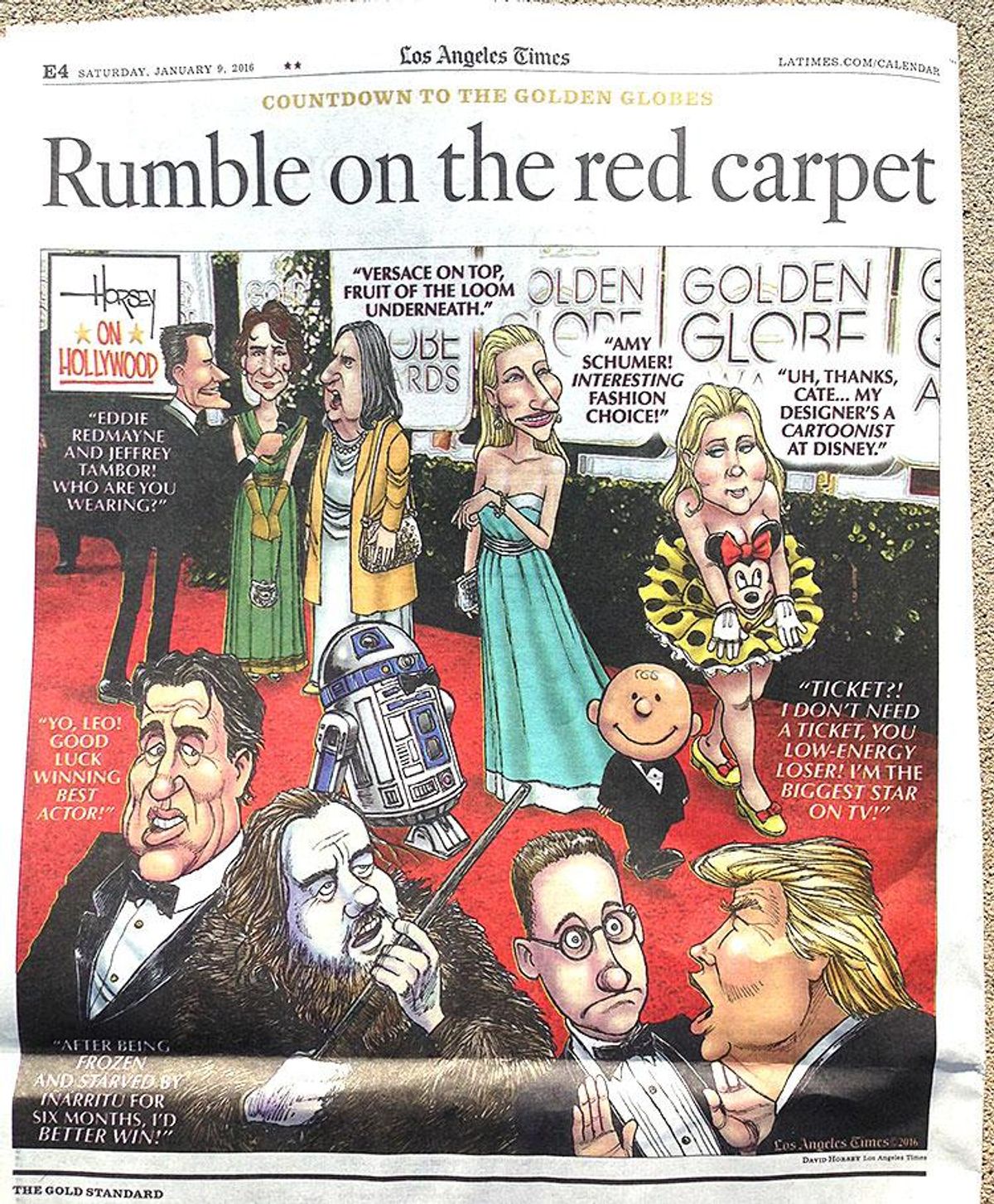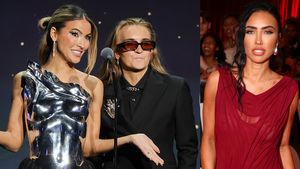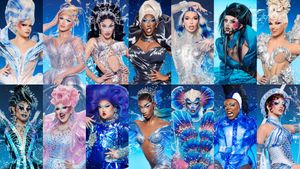One week ago today, readers of the Los Angeles Times saw an editorial cartoon depicting celebrities at the Golden Globes, an artist's imaginative interpretation of the scene he expected to play out in Hollywood last Sunday night, although not all of it came true.
First, just as R2D2 and Charlie Brown did not actually appear on the red carpet, the two men nominated for playing transgender characters wore men's suits, not their costumes. Second, readers of the newspaper edition saw something in their version of the cartoon that online readers did not, a detail that looked potentially transphobic to some.
The cartoon is by two-time Pulitzer Prize-winning editorial cartoonist and L.A. Times columnist and political commentator David Horsey, whose work appears in hundreds of media outlets.
Among the stars Horsey featured in his drawing alongside Sly Stallone, Leonardo DiCaprio, Cate Blanchett, and Amy Schumer were Eddie Redmayne and Jeffrey Tambor, the two cisgender (nontrans) men nominated for roles as transgender women.
It should be noted this cartoon appeared before host Ricky Gervais's transphobic monologue about Tambor and Caitlyn Jenner and the joke he made about Redmayne's movie The Danish Girl.
The focus of Horsey's cartoon was in fact not the actors, but Donald Trump, who is represented fairly as being a blowhard who declares, "Ticket? I don't need a ticket, you low-energy loser! I'm the biggest star on TV."
A note at the bottom of the commentary, written by Horsey to accompany his cartoon, directs readers to "Watch for an expanded version of my Trump-on-the-red-carpet cartoon in Saturday's edition of the Times and see what all the other characters have to say."
Here's what online readers saw:

But in the edition appearing only in print, the tuxedo-wearing man who is interviewing Redmayne and Tambor asks, "Who are you wearing?" Although the interviewer calls the men by their actual names, the actors are drawn to appear as their fictional characters, trans women Lily Elbe and Maura Pfefferman, respectively.
Tambor answers the question about their outfits: "Versace on top, Fruit of the Loom underneath."
It was not clear to readers why this "joke" only appeared in last Saturday's print edition and not on the website of the newspaper, and some questioned whether the decision represented a concern by the editors that the cartoon might be seen as transphobic. One reader who identified himself as cisgender described the cartoon as comparing "trans stories to just 'dressing up.'"
In search of answers, editors at The Advocate reached out to the Times, to Horsey, and to two transgender women who write and illustrate characters who are trans.
While editors at the Times scrambled for hours to find the right person to answer these questions, columnist Horsey responded swiftly to our email:
"The difference between the versions of the cartoon is simple. The full version in print was done for the entertainment audience. The version on my Top of the Ticket blog was something of a preview for the print version and focused only on the political aspect -- Donald Trump -- because it is a politics blog.
"Regarding the concern about my caricatures of Eddie Redmayne and Jeffrey Tambor, they are, of course, actors playing transsexual characters, they are not transsexuals themselves, so they are, quite literally, just dressing up. It was a light jest on actors, not on transsexuals. Anyone who knows my work knows I am a strong supporter of LGBTQ rights."
Upon learning Horsey had responded, the Times let us know "We do not have a further comment."
But Sophie Labelle did. She is the creator of Assigned Male, a popular Web comic about a transgender girl discovering and embracing her authenticity, as well as a writer and a trans activist in Montreal. Here are her thoughts:
"There are many things that are problematic here. First, the double standard between the printed version (the 'entertainment' version, as the L.A. Times writer calls it) and the web version. It's like it is OK to mock trans people as long as they can't do anything about it.
"Second, I find it highly exhausting to deal with the same kind of jokes than we had to deal with three decades ago -- and in that, the comic is a great echo of Ricky Gervais' 'jokes' on Sunday evening. Trans communities spent the last couple of months criticizing Transparent and The Danish Girl; there are tons of things to mock those actors about. Focusing on their characters' transness is symptomatic of a transphobic and cissexist society.
"Third, as much as I understand the effect of drawing those actors as their characters, it undoubtedly contributes to the problem many trans communities find in movies that cashes on trans narratives by hiring cisgender actors to play trans characters, since it reinforces the idea that trans women are men with a dress on -- which is ultimately what the illustrators portrays here. With or without the 'joke' about trans women's genitalia, this comic remains transphobic.
"As a cartoonist and an activist, I don't see how this comic's author can call himself a 'strong supporter of LGBT rights' and at the same time spit on trans people's dignity."
The Advocate also sought the opinion of another cartoonist, who is also a writer, educator, storyteller, and filmmaker: Gillian Cameron of Los Angeles, the writer and illustrator of a weekly Web comic and graphic novel. Calogrenantdepicts the adventures of an Arthurian knight who is transformed into a maiden.
"This brings up a major problem for the caricaturist, whose job it is to satirize just about anything that is put before him or her. The job is not to flatter. And anyone comes out looking somewhat grotesque.
"The characters portrayed by Jeffrey Tambor and Eddie Redmayne are trans women; Does this mean that they are sacrosanct? For myself, I don't think the depictions here are half as vitriolic and demeaning as the jokes made by Ricky Gervais. I doubt the picture would have the same impact if the two actors were shown in male attire.
"Why show them at all? Perhaps because their respective productions have garnered a good deal of press. And really, how strange is it to depict an actor in character?
"But at this juncture, with the situation at touchy as it is, the caricaturist, as I've said, is posed with the problem of caricaturing a trans person or a performer portraying a trans person.
"How is this done tastefully and in such a way as not to be unnecessarily offensive? (This, of course is exacerbated by the fact that these actors and their production companies have received a great deal of criticism from sectors of the trans community for using cisgender actors.) Truth be told, I would've avoided this like the plague."
Tell us your thoughts in the comments below.



















































































